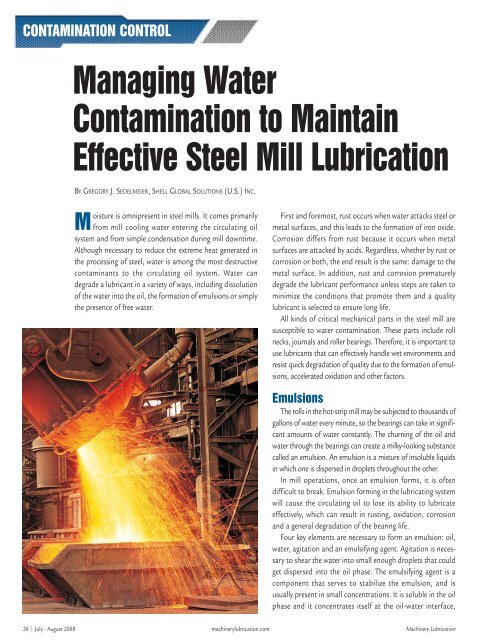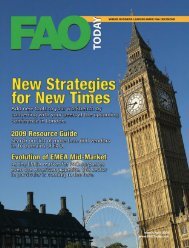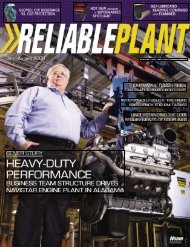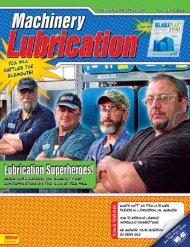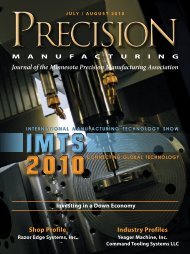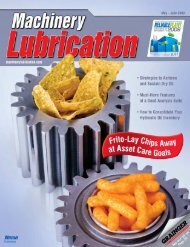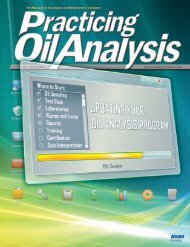Machinery Lubrication July August 2008
Machinery Lubrication July August 2008
Machinery Lubrication July August 2008
Create successful ePaper yourself
Turn your PDF publications into a flip-book with our unique Google optimized e-Paper software.
CONTAMINATION CONTROL<br />
Managing Water<br />
Contamination to Maintain<br />
Effective Steel Mill <strong>Lubrication</strong><br />
BY GREGORY J. SEDELMEIER, SHELL GLOBAL SOLUTIONS (U.S.) INC.<br />
Moisture is omnipresent in steel mills. It comes primarily<br />
from mill cooling water entering the circulating oil<br />
system and from simple condensation during mill downtime.<br />
Although necessary to reduce the extreme heat generated in<br />
the processing of steel, water is among the most destructive<br />
contaminants to the circulating oil system. Water can<br />
degrade a lubricant in a variety of ways, including dissolution<br />
of the water into the oil, the formation of emulsions or simply<br />
the presence of free water.<br />
First and foremost, rust occurs when water attacks steel or<br />
metal surfaces, and this leads to the formation of iron oxide.<br />
Corrosion differs from rust because it occurs when metal<br />
surfaces are attacked by acids. Regardless, whether by rust or<br />
corrosion or both, the end result is the same: damage to the<br />
metal surface. In addition, rust and corrosion prematurely<br />
degrade the lubricant performance unless steps are taken to<br />
minimize the conditions that promote them and a quality<br />
lubricant is selected to ensure long life.<br />
All kinds of critical mechanical parts in the steel mill are<br />
susceptible to water contamination. These parts include roll<br />
necks, journals and roller bearings. Therefore, it is important to<br />
use lubricants that can effectively handle wet environments and<br />
resist quick degradation of quality due to the formation of emulsions,<br />
accelerated oxidation and other factors.<br />
Emulsions<br />
The rolls in the hot-strip mill may be subjected to thousands of<br />
gallons of water every minute, so the bearings can take in significant<br />
amounts of water constantly. The churning of the oil and<br />
water through the bearings can create a milky-looking substance<br />
called an emulsion. An emulsion is a mixture of insoluble liquids<br />
in which one is dispersed in droplets throughout the other.<br />
In mill operations, once an emulsion forms, it is often<br />
difficult to break. Emulsion forming in the lubricating system<br />
will cause the circulating oil to lose its ability to lubricate<br />
effectively, which can result in rusting, oxidation, corrosion<br />
and a general degradation of the bearing life.<br />
Four key elements are necessary to form an emulsion: oil,<br />
water, agitation and an emulsifying agent. Agitation is necessary<br />
to shear the water into small enough droplets that could<br />
get dispersed into the oil phase. The emulsifying agent is a<br />
component that serves to stabilize the emulsion, and is<br />
usually present in small concentrations. It is soluble in the oil<br />
phase and it concentrates itself at the oil-water interface,<br />
26 <strong>July</strong> - <strong>August</strong> <strong>2008</strong> machinerylubrication.com <strong>Machinery</strong> <strong>Lubrication</strong>


